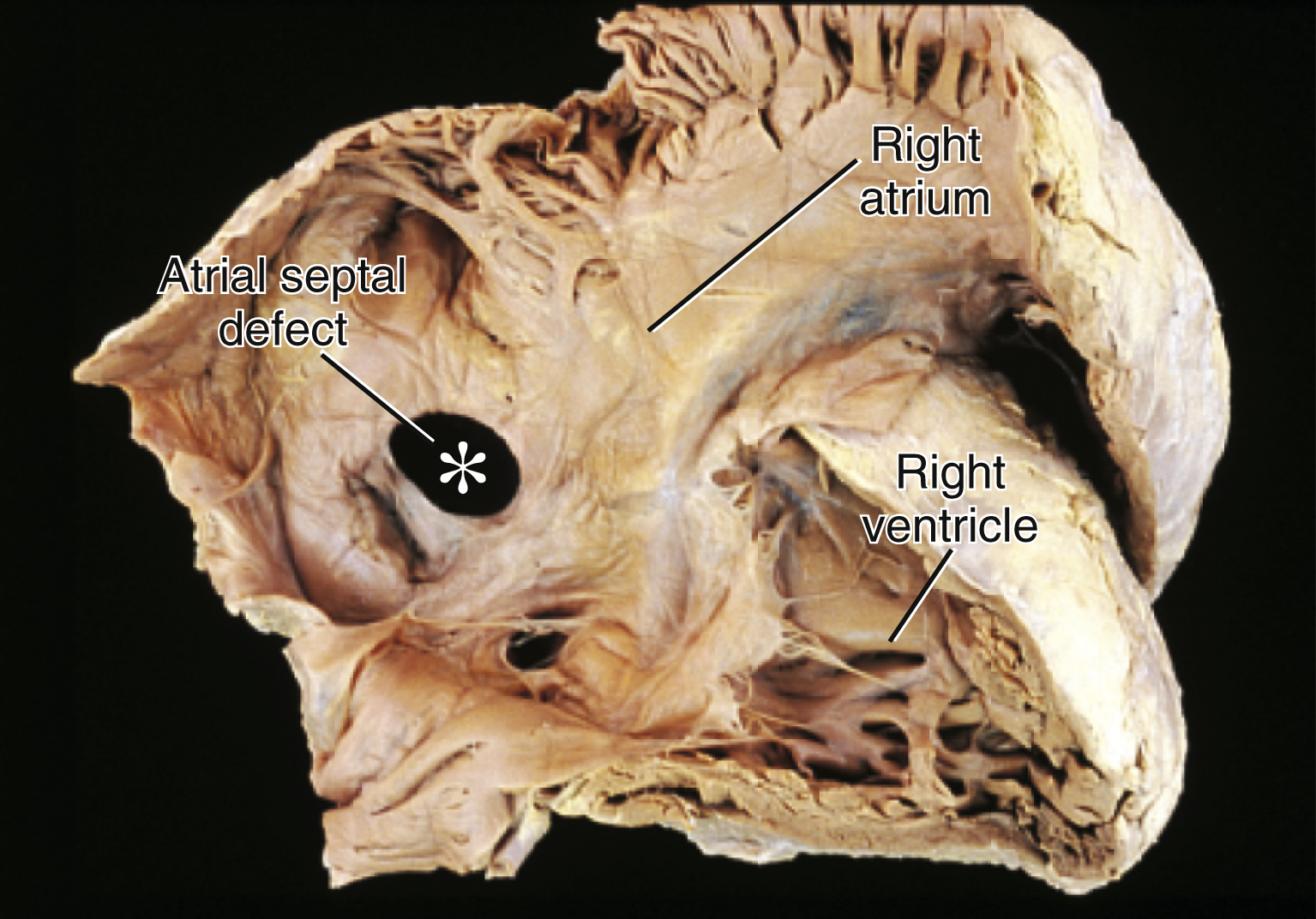atrial septal defect (ASD), a congenital cardiac anomaly characterized by an abnormal opening between the atria. The severity of the condition depends on the size and location of the opening, which are related to the stage at which embryonic development of the septum was arrested. ASDs are classified as ostium primum defect, in which there is inadequate development of the endocardial cushions of the first septum of the fetal heart; ostium secundum defect, in which the aperture in the second septum of the fetal heart fails to close; and sinus venosus defect, in which the superior portion of the atrium fails to develop. ASDs increase the flow of oxygenated blood into the right side of the heart, which is usually well tolerated, since the blood is delivered under much lower pressure than in ventricular septal defect. Clinical manifestations include a characteristic harsh, scratchy systolic murmur and a fixed splitting of the second heart sound, which does not vary with respiration. X-ray films and electrocardiograms generally show right atrial and right ventricular enlargement, although definitive diagnosis is made by cardiac catheterization or echocardiogram. Closure is indicated in most cases but is usually postponed until later childhood, unless the defect is severe. Closure may be done surgically or via a percutaneous approach. See also endocardial cushion defect.

